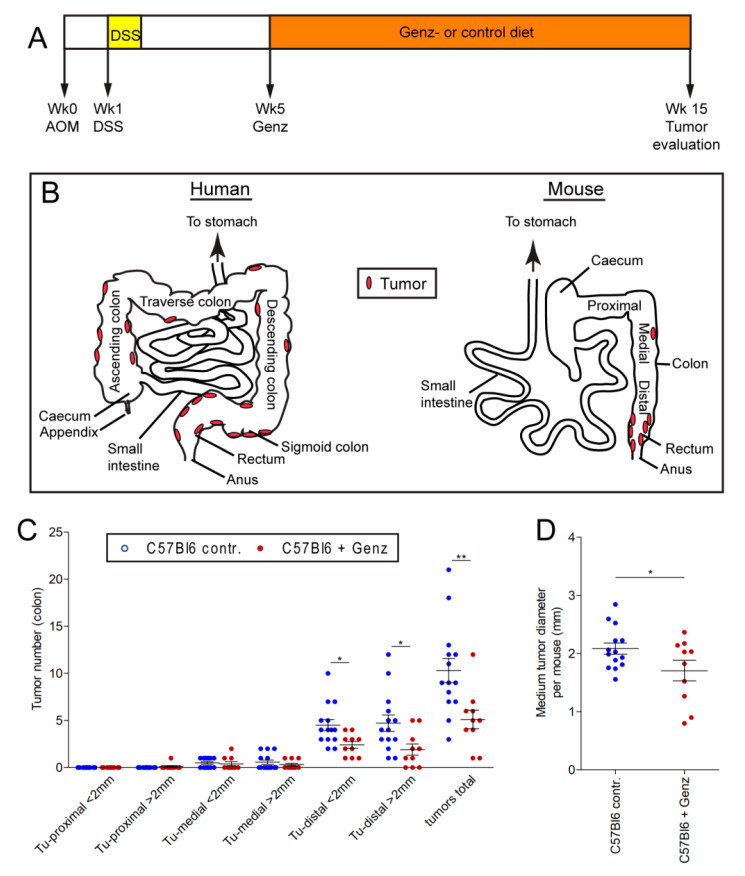Figure 7.
Genz treatment lowered the incidence of experimental CRC in vivo. (A) Scheme of the treatment course. CRC was induced in C57Bl6 mice with azoxymethane (AOM) at the age of 8 weeks, followed by a tumor promoting 5-day cycle of dextrane sulfate (DSS) applied by the drinking water starting one week after the AOM-treatment. Mice, n = 24, received chow diet until five weeks after tumor induction. Then one cohort of animals, n = 10, received 0.225% Genz in the food. All animals were sacrificed 15 weeks after tumor induction according to the termination criteria from the animal application. (B) Scheme of the human and murine intestinal tract. Colorectal tumors in humans develop preferentially in the areas of the sigmoid colon and the rectum but also in other areas of the large intestine. In this mouse model, we observed tumors predominantly restricted to the rectal area of the colon with a critical load at fifteen weeks after tumor induction. (C) Treatment of mice with Genz resulted in a markedly lower number of colorectal tumors in the distal part of the colon. (D) The size of tumors detected in the colons of Genz-treated mice was also notably smaller as compared to chow fed mice; each data point represents the mean size of all tumors detected in one mouse; significances are *, p ≤ 0.05; **, p < 0.01.

